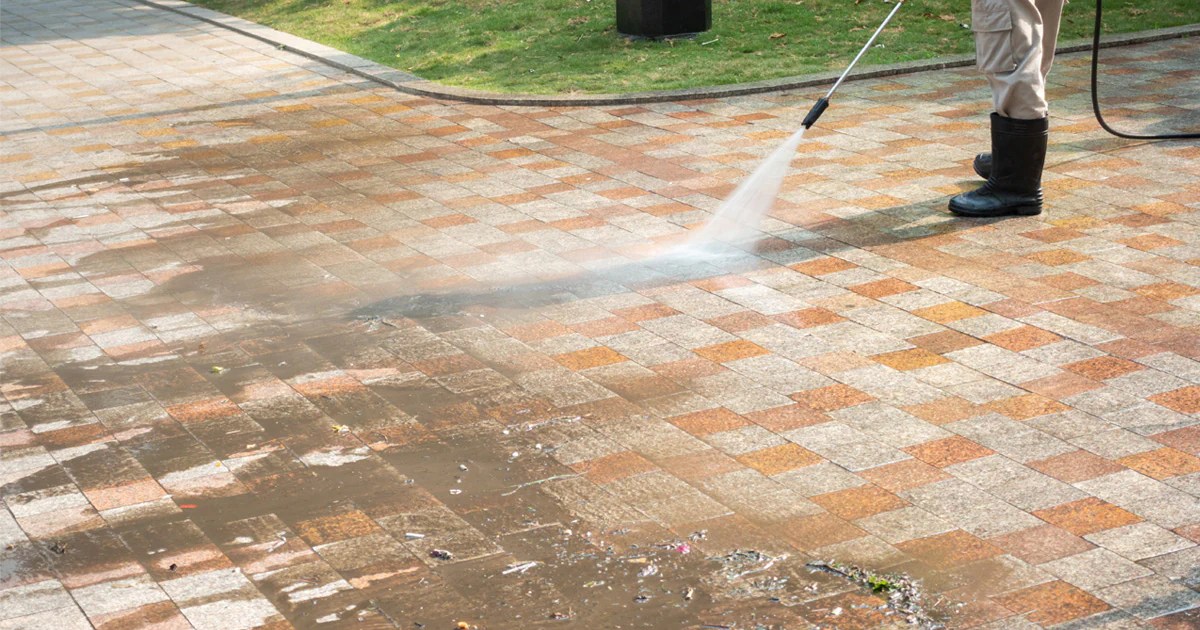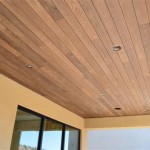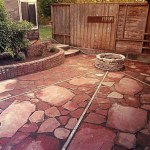How To Clean a Cement Patio With a Pressure Washer
Maintaining a clean and aesthetically pleasing cement patio enhances the overall value and usability of outdoor spaces. Over time, cement patios accumulate dirt, grime, mold, algae, and other unsightly stains. Regular cleaning is essential to preserve their appearance and structural integrity. Pressure washing offers an efficient and effective method for removing these contaminants, restoring the patio to its original condition. This article provides a comprehensive guide on how to clean a cement patio with a pressure washer, outlining the necessary steps, safety precautions, and additional considerations for optimal results.
Pre-Cleaning Preparation
Prior to commencing the pressure washing process, several preparatory steps are crucial. These steps ensure a safe and effective cleaning operation, minimizing potential damage and maximizing the overall outcome. This phase addresses the removal of obstacles, debris, and the application of pre-treatment solutions.
First, clear the patio area of all furniture, potted plants, and decorative items. This prevents these objects from being damaged by the high-pressure water stream or becoming obstacles during the cleaning process. Protecting surrounding vegetation is also important. Cover nearby plants and delicate landscaping with tarps or plastic sheeting to shield them from overspray and potential chemical exposure. Consider wetting the plants down before and after cleaning to further minimize the risk of damage from any cleaning solutions used.
Next, sweep or blow away any loose debris, such as leaves, twigs, dirt, and sand. A broom or leaf blower can expedite this process. Removing this surface-level debris prevents it from becoming a muddy mess during pressure washing and allows the water stream to directly target the embedded dirt and stains. Pay particular attention to cracks and crevices where debris tends to accumulate.
For heavily soiled patios with significant mold, mildew, or algae growth, consider applying a pre-treatment solution. Several commercially available patio cleaners are designed specifically for this purpose. Choose a cleaner appropriate for cement and follow the manufacturer's instructions carefully. Typically, these solutions are applied using a garden sprayer or pump sprayer and allowed to dwell on the surface for a specified period. This dwell time allows the cleaner to penetrate the stains and loosen the contaminants, making them easier to remove during pressure washing.
When selecting a pre-treatment solution, prioritize eco-friendly options to minimize environmental impact. Alternatives like a diluted solution of bleach and water (approximately 1 part bleach to 10 parts water) can be effective for killing mold and mildew, but exercise caution and wear appropriate protective gear. Always test any cleaning solution in an inconspicuous area of the patio first to ensure it does not discolor or damage the cement. Rinse the test area thoroughly after the dwell time to assess the results before applying the solution to the entire patio.
The Pressure Washing Process
The core of the cleaning procedure involves the strategic and controlled application of high-pressure water to dislodge and remove dirt, grime, and stains from the cement surface. Proper technique is critical to avoid damaging the patio and to achieve a uniform and thorough cleaning.
Before starting, choose the appropriate nozzle for the pressure washer. Nozzles are typically color-coded and designated by their spray pattern. A wider nozzle, such as a 25-degree or 40-degree nozzle, is generally recommended for cleaning cement patios. These nozzles provide a broader spray pattern, which is less likely to damage the surface than a narrow, high-intensity nozzle like a 0-degree nozzle. Avoid using a 0-degree nozzle on cement, as it can etch or gouge the surface due to its concentrated water stream.
Connect the chosen nozzle to the pressure washer wand and ensure all connections are secure. Connect the water supply hose to the pressure washer inlet and turn on the water. Start the pressure washer and adjust the pressure to an appropriate level. It is generally recommended to start with a lower pressure setting and gradually increase it until you achieve the desired cleaning effect. As a general guideline, a pressure of between 1500 and 2000 PSI is typically sufficient for cleaning cement patios. However, the optimal pressure will depend on the age and condition of the cement and the severity of the staining. Again, testing in an inconspicuous area is recommended.
Hold the pressure washer wand at a consistent distance from the patio surface, typically around 12 to 18 inches. Use a sweeping motion, overlapping each pass slightly to ensure uniform cleaning. Avoid holding the wand in one spot for too long, as this can damage the cement. Work in small sections, systematically cleaning the entire patio. For stubborn stains, you may need to apply slightly more pressure or repeat the cleaning process.
Pay close attention to any areas with cracks or joints. These areas are prone to collecting dirt and debris, and may require more focused cleaning. Use the pressure washer to carefully clean out any debris from these cracks and joints. If necessary, use a specialized nozzle designed for cleaning cracks and crevices, such as a rotary nozzle.
After cleaning a section of the patio, rinse it thoroughly with clean water to remove any remaining dirt or cleaning solution residue. This prevents the residue from drying on the surface and potentially causing discoloration or staining. Continue this process until the entire patio has been cleaned.
Post-Cleaning Procedures and Maintenance
The cleaning process is not complete upon shutting off the pressure washer. Post-cleaning procedures ensure longevity, prevent recurring issues, and enhance the final aesthetic appeal of the patio. These procedures incorporate rinsing, sealing, and ongoing maintenance.
After pressure washing the entire patio, give it a final, thorough rinse with clean water. This ensures that all remaining dirt, debris, and cleaning solution residue are removed from the surface. Use a garden hose with a spray nozzle to rinse the patio, paying particular attention to any areas where residue may have accumulated.
Allow the patio to dry completely before applying a sealant. Sealing the cement is highly recommended, as it helps to protect the surface from future staining, water damage, and deterioration. Choose a high-quality concrete sealant that is specifically designed for outdoor use. There are two main types of concrete sealants: penetrating sealants and film-forming sealants.
Penetrating sealants soak into the pores of the concrete and provide protection from within. They do not change the appearance of the concrete and are typically more durable and longer-lasting than film-forming sealants. Film-forming sealants create a protective layer on the surface of the concrete. They can enhance the appearance of the concrete by adding a sheen or color, but they are more susceptible to wear and tear and may require more frequent reapplication.
Follow the sealant manufacturer's instructions carefully when applying the sealant. Typically, sealants are applied using a roller, brush, or sprayer. Apply the sealant evenly to the entire patio surface, ensuring that all areas are covered. Allow the sealant to dry completely before using the patio.
Regular maintenance is essential to keep the patio clean and well-maintained. Sweep or blow away any loose debris regularly to prevent it from accumulating on the surface. Clean up spills and stains promptly to prevent them from penetrating the cement. Periodically rinse the patio with water to remove any surface dirt or grime. If necessary, use a mild detergent and water to clean the patio.
Depending on the level of foot traffic and exposure to the elements, the patio may need to be pressure washed periodically to remove any stubborn stains or dirt. Reapply sealant every one to three years, or as needed, to maintain its protective properties. By following these post-cleaning procedures and maintenance tips, the cement patio will remain clean, attractive, and durable for years to come.

Best Way To Clean A Concrete Patio Chalking Up Success

How To Pressure Wash Concrete Driveways Patios Network

Pressure Washing A Concrete Patio Rolling Suds

How To Clean Patio Slabs Minster Paving

How To Clean A Concrete Patio Maintenance Tips Network

Transforming A Concrete Patio With Pressure Washing Rolling Suds

How To Clean Concrete Professional Pressure Washing Vs Diy Washh

Pressure Washing Brick Patios And Walkways How To Wash

How To Clean Concrete The Easy Way Porches Patios Driveways More Run Radiance

Best Ways To Clean Your Patio Slabs Checkatrade
Related Posts








